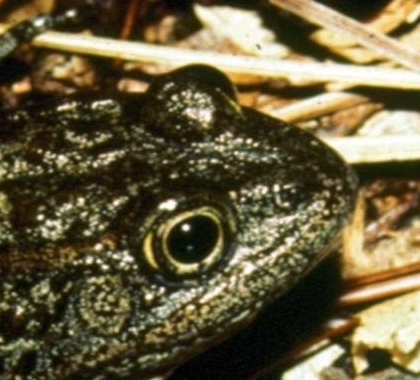By a vote of eight to six, the U.S. Court of Appeals for the Fifth Circuit declined to reopen proceedings in Markle v. U.S. Fish and Wildlife Service (FWS), in which an earlier panel of the court determined FWS could list as critical habitat private property that currently contains no members of a protected species.
At issue in the case was whether FWS can designate an area as critical habitat for an endangered species, in this case the dusky gopher frog, if the species doesn’t occupy the area so designated and current conditions preclude the species from using the area for habitat. The lower court’s decision to allow the designation remains in force.
Habitat Designation Challenged
Historically, the dusky gopher frog has been located in Alabama, Louisiana, and Mississippi. Currently, just 100 exist, all of which in Mississippi. In 2012, to help the species recover, FWS designated 6,477 acres as critical habitat for the frog, including 1,544 acres of private land located in St. Tammany Parish, Louisiana, where the frogs have not existed for decades.
Louisiana landowners, represented by the Pacific Legal Foundation (PLF), joined a timber company in challenging the frog’s critical habitat designation. The plaintiffs argued FWS’ decision to list the private property as critical habitat was unjustified because the frog couldn’t survive in the area without changes in vegetation and the land’s use.
In June 2016, by a 2–1 vote, a three-judge panel of the Fifth Circuit Court ruled it was within FWS’ discretion to include the property as critical habitat for the frog and FWS was not required to consult with the property owners when determining the species’ critical habitat.
The Fifth Circuit Court’s February 13 decision not to reopen the case upholds FWS’ critical habitat designation.
In a 31-page dissent authored by Judge Edith Jones, the judges who favored the court taking up the case compared the majority’s action to the dusky gopher frog’s own behavior.
When threatened, the frog typically plays dead, peeks out from shielded eyes, and plays dead again.
“The panel majority regrettably followed the same strategy in judicial review—play dead, cover their eyes, peek, and play dead again,” wrote Jones.
‘Bad News for Endangered Species’
Brian Seasholes, a former research fellow at the Reason Foundation and now an independent scholar, said the Fifth Circuit’s decision has troubling implications for property owners and endangered species alike.
“What’s remarkable about Markle is the habitat they’re claiming is necessary for the dusky gopher frog is not occupied by the actual species,” Seasholes said. “It’s unsuitable habitat, and the only way it can be rendered suitable is through human intervention.
“Going forward, this ruling creates uncertainty for landowners, as no one can be sure what is going to be included as critical habitat under the 1973 Endangered Species Act,” said Seasholes. “Experience shows this will spur increased habitat regulation, which will ultimately be bad news for endangered species themselves.”
Seasholes says this decision makes a bad situation worse.
“The Endangered Species Act already makes endangered species into liabilities for landowners,” said Seasholes. “This decision makes the situation worse.”
‘Bewildering Display of Creative Rulemaking’
Reed Hopper, a senior attorney with PLF’s Northwest Center, says the Fifth Circuit’s decision poses a serious threat to property owners nationwide.
“Five years ago, in a bewildering display of creative rulemaking that is becoming all too common among federal bureaucrats, FWS officials decided 1,500 acres of private land should be set aside for the protection of the dusky gopher frog, even though the land is wholly unsuitable as habitat,” said Hopper. “The land is unoccupied, inaccessible, and unusable by the gopher frog. By any definition, the land provides no benefit to the frog whatsoever.
“This did not stop FWS from baldy declaring the preservation of the site outweighed the $34 million cost to the landowners,” Hopper said. “The upshot of this expansive interpretation of the ESA upheld by the Fifth Circuit Court is that if [FWS] can designate non-habitat as critical habitat, there is no meaningful limit to the power of the government to regulate private property nationwide. No area would be off-limits to federal regulation in the name of species protection.”
Michael McGrady ([email protected]) writes from Colorado Springs, Colorado.




